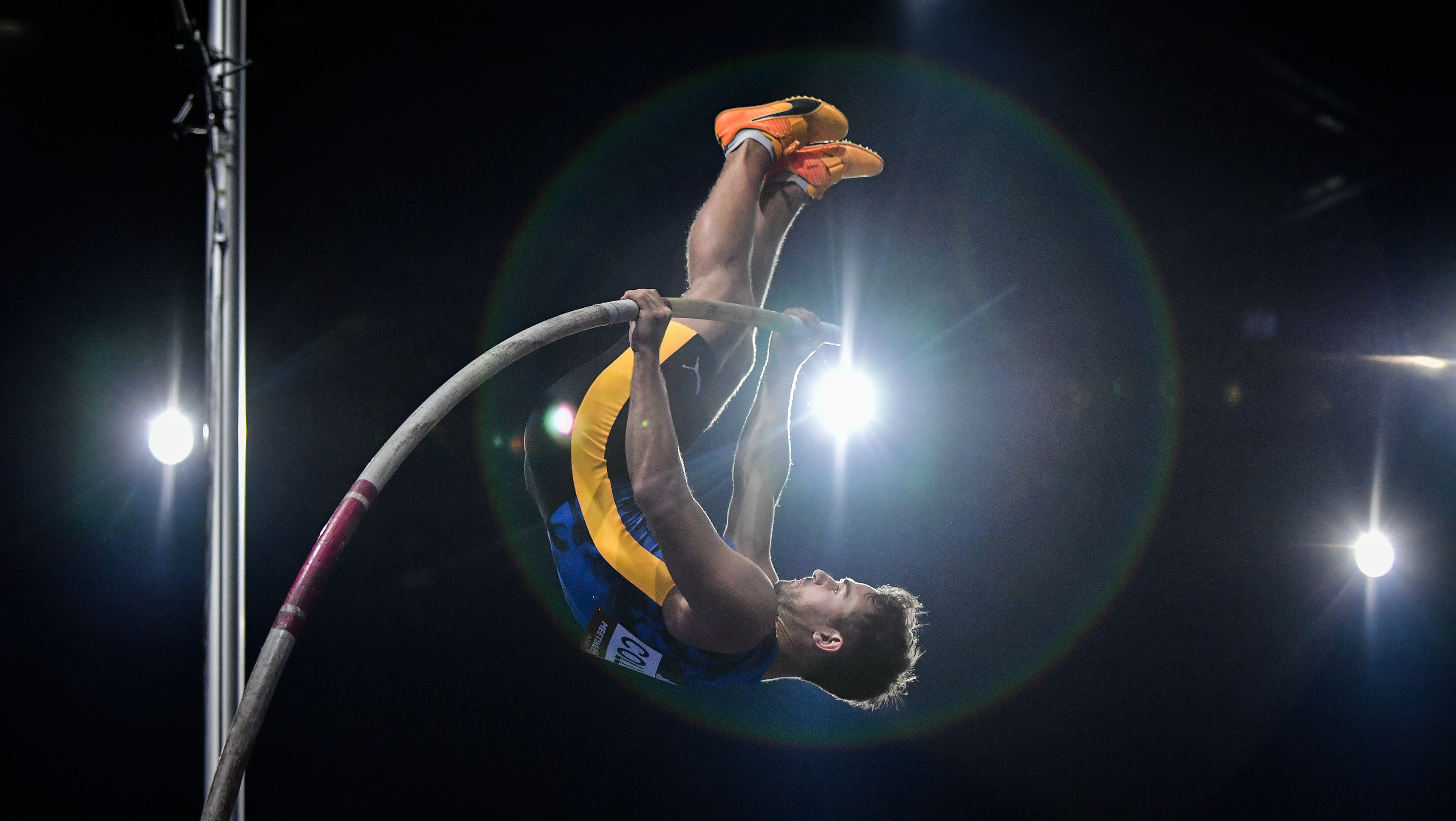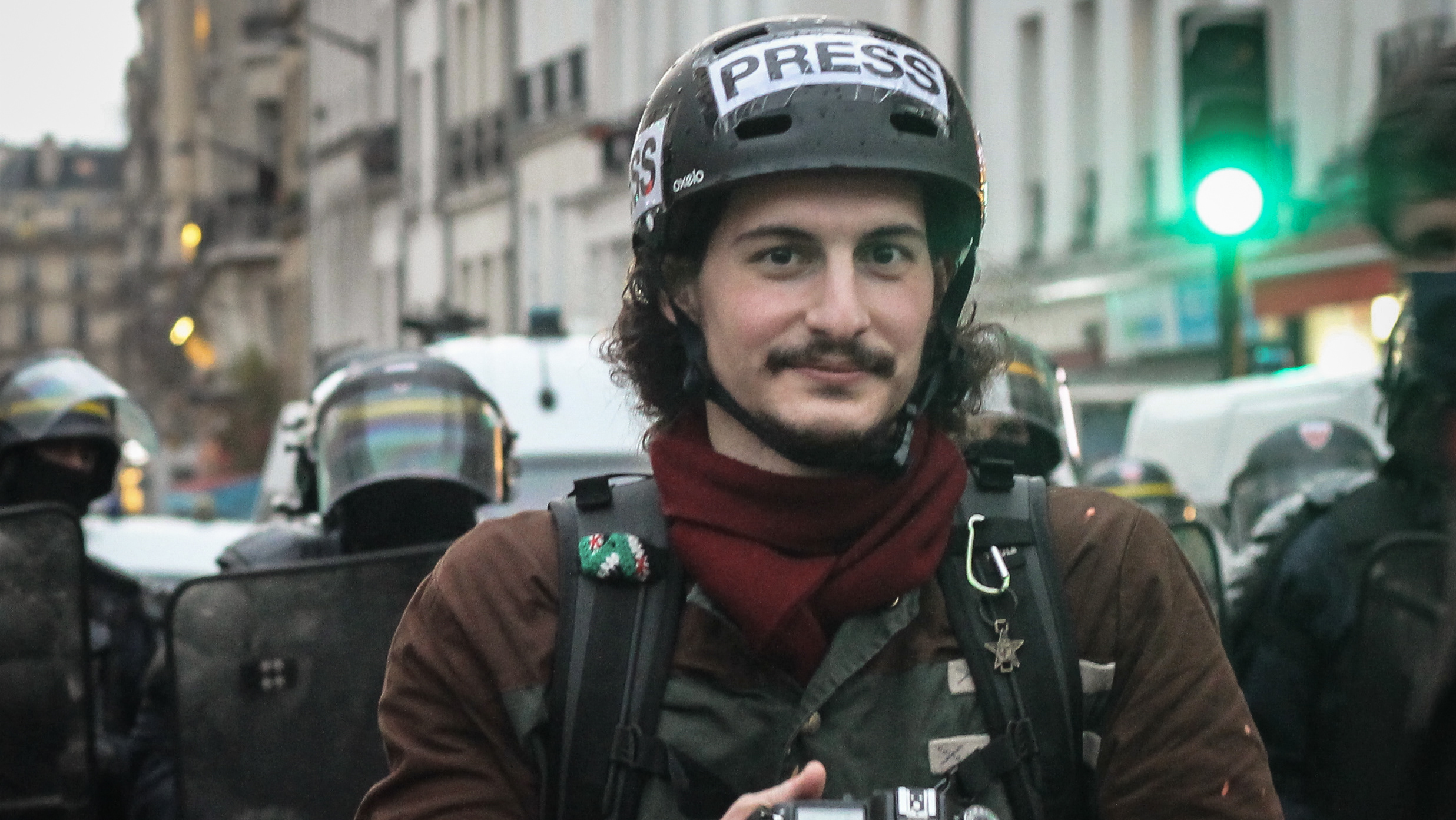A survivor walks among the rubble of his destroyed neighborhood after an airstrike from Syrian regime forces on the city of Douma, Eastern Ghouta, on November 1, 2015.
A civilian martyr and olive branches––the symbol of peace. Blood stained the olive branch after Syrian regime air forces carried out an airstrike on a residential neighborhood in the city of Douma in Eastern Ghouta on November 1, 2015.
A civilian looks up at the sky after an airstrike, trying to catch a glimpse of the second set of fighter jets overhead about to carry out a second strike (known as a double-tap strike) on his targeted neighborhood in Douma, Eastern Ghouta, on November 10, 2016.
A man carries two children shortly after an airstrike by Syrian regime air forces on his neighborhood, Douma city, Eastern Ghouta, on the morning of August 23, 2016.
A martyr is carried by his relatives and the White Helmets (Syrian Civil Defence) out of the makeshift morgue to his final resting place in the Douma cemetery after an airstrike attack on November 27, 2017.
A child runs amid the Douma public market after surviving an airstrike by Syrian regime forces on August 16, 2016. The raid
killed 120 people and injured 300, in what became known as the "Market Massacre".
The White Helmets (Syrian Civil Defence) extinguish a fire that broke out in a store after an airstrike by Syrian regime forces on Kouatli Avenue in Douma City, Eastern Ghouta on November 8, 2015.
The White Helmets (Syrian Civil Defence) rescue an injured civilian after an airstrike by Syrian regime forces targeted a residential neighborhood in Douma on January 8, 2018.
A civilian carries one of his neighbors, injured in an airstrike by Syrian regime air forces on their neighborhood in Douma, Eastern Ghouta, November 1, 2015.
An artillery shell explodes after striking a residential building in Douma, one of the daily artillery shell strikes launched by Syrian regime forces on the city. November 17, 2016.
The "Night of Napalm" is how the people of Douma refer to the night of March 23, 2018. More than 20 air raids by the Russian Air Force were conducted that night with napalm ammunition, an incendiary weapon prohibited by international conventions. This image shows an entire building ravaged by flames following the raids that night.
Surviving civilians fleeing through the ash cloud caused by an airstrike by Syrian regime forces on a residential neighborhood in the central city of Douma, February 25, 2017.
Protesters chant during a demonstration against the Syrian regime in Saqba on January 13, 2017, amid the Syrian regime siege on Eastern Ghouta in Syria.
Since 2011, Syrians have never stopped peacefully demonstrating for the calls of the Syrian Revolution, demanding Bashar al-Assad step down from power and leave the country in the hands of the people.
Protesters chant during a demonstration against the Syrian regime in Douma City on February 10, 2017, amid the Syrian regime siege on Eastern Ghouta in Syria.
A woman demonstrates as she cries out in solidarity with the people of the city of Aleppo during the military campaign against the city. Ein Tarma, Eastern Ghouta, December 16, 2016.
Young boys chant during a demonstration against the Syrian regime in Douma on February 2, 2017, amid the Syrian regime siege on Eastern Ghouta in Syria.
Children played an important role in the Peaceful Revolution by participating in demonstrations despite the danger. Many of them chose to try their hand at freedom of expression for the first time in their lives.
Children fill a container with water using a new manual method of bringing water up from the ground, using compressed air, on July 14, 2015. This water is not drinkable but it is the only water available for drinking or washing.
Children pick up some of the items left over after Syrian air forces bombed their residential neighborhood in the center of the town of Ein Tarma in Eastern Ghouta on July 24, 2017.
taken in the town of Kafar Batna in Eastern Ghouta on August 12, 2017.
A wounded child walks past a truck belonging to a Syrian Arab Red Crescent convoy in downtown Douma in Eastern Ghouta on August 17, 2017.
A child takes a last look at one of his relatives who died after shelling by the Syrian regime forces in a residential area of the city of Douma on November 17, 2017.
Two children touch a UNICEF vehicle parked after entering Douma with a UN convoy to assess the situation in the city during the latest military campaign by the Syrian regime army and Russian air forces in Eastern Ghouta on August 17, 2017.
"If the blood shed by our children was oil, the world would intervene immediately," says a banner written by activists in the city of Douma, as the UN convoy and the International Committee of the Red Cross entered the city on November 12, 2017.
A view of the city of Douma taken from the minaret of the city's Grand Mosque before sunset on February 16, 2016. The photo shows the extensive destruction after three years of relentless bombing by the Syrian army and Russian air force on the residential areas.
Residents take advantage of a moment of respite amidst the shelling to leave their shelters, repair the damage, and inspect their neighborhoods after enduring several raids by the Russian air forces in Douma City, Eastern Ghouta, on February 7, 2018.
Friends meet on the street in their neighborhood in Douma as the girl shows her necklace to her two friends selling food on a chair on May 28, 2016.
A child holds his infant brother and a bottle of milk in a rare bright spot of an underground shelter in the city of Douma on February 21, 2018.
Abo Salamah: “Five so far!”
I still remember that day, July 27, 2016. It was noon. It was a sunny day, an almost normal day. A normal day for us meant daily bombardment, air strikes, and empty streets, except for the ambulances and Civil Defence first responder vehicles. As I had become accustomed to it, I arrived in the targeted area and watched the Civil Defence team extract wounded survivors from a building destroyed by the regime air force.
I watched this man, known to his friends as Abo Salamah, also known as Muhammed Masarweh. I recognized him immediately because I was used to seeing him on the scene organizing rescues, especially dangerous ones like this. Abo Salamah, as head of the Civil Defence in Eastern Ghouta, was always in the first vehicle going to the site of the latest strike. Sometimes he even arrived on a motorcycle ahead of the rest of the rescue team. I often drew courage from his drive. His willingness to rush to the scene motivated and inspired me.
That day, the rescuers were working very hard to free the wounded from the bombardment of their hellish situation, crushed in the rubble underneath what had been their rooftop. Abo Salamah was talking to an old woman who was trapped. I couldn't understand their words, only muffled sounds came through to me, but he seemed to be encouraging her.
After a while, Abo Salamah and his team succeeded. They pulled this old woman out from the rubble of what had been her house.
“Five so far!" Abo Salamah shouted. He had managed to rescue five civilians that day, all in front of the crowd that was watching both this tragedy and search and rescue unfold.
I took this photo of him as he held up his hands, showing the number of civilians they had been able to rescue: Five.
Less than two years later, during the last Russian-backed military campaign by the Syrian regime in Eastern Ghouta in early 2018, Abo Salamah was captured alive by the regime forces while visiting his farm on the outskirts of the city of Douma.
He was immediately executed with a bullet to the head. His body was found a few days later, at his farm, after rebels making progress on the ground discovered his body.
The news of his death shocked us all. March 9, 2018. That was his day, the day we lost Abo Salamah.
A man rides his bicycle in front of what remains of the local mosque and through the rubble of his neighborhood in Douma City on March 30, 2018.
This photo is the last one I took of my hometown of Douma, before my family and I fled to northern Syria due to the Syrian regime's final military campaign, backed by Russian forces against the civilians in Eastern Ghouta. It is what remained of my neighborhood when we left that day.
The man on the bicycle is my father, that was the last time we turned our backs to our destroyed house taking the way downtown for the displacement buses.





